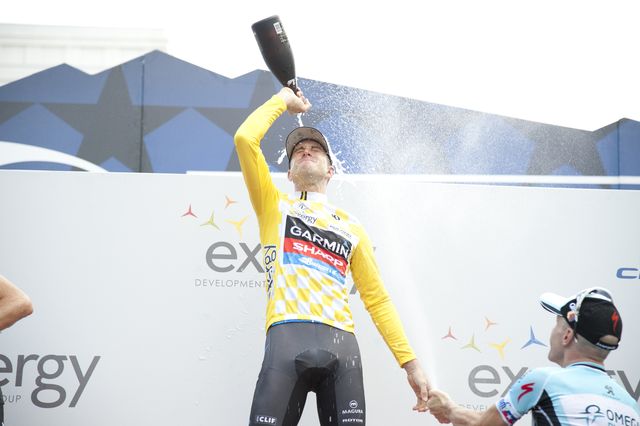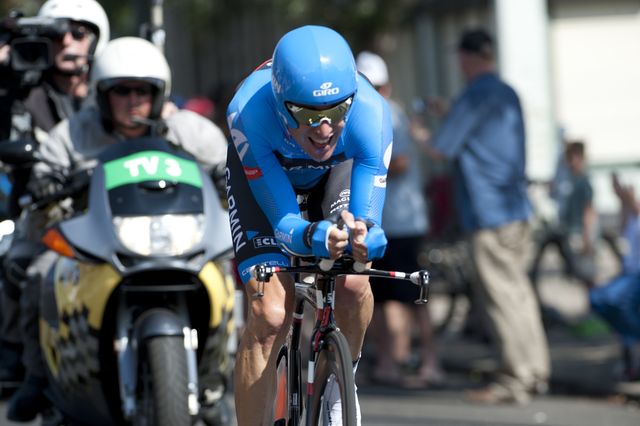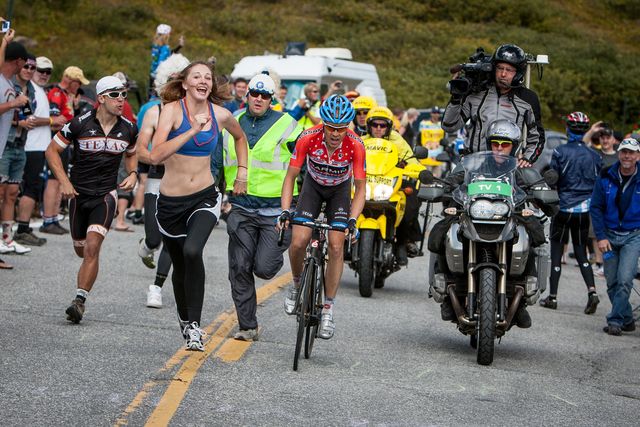
The second annual USA Pro Challenge, which I'll forever call the Tour of Colorado, wrapped up on Sunday, and I defy you to find anyone who said it wasn't better than the first edition. Not only was the race one day longer than the inaugural event, but the course was better crafted to preserve the drama down to the finish. And that it did, with Garmin-Sharp's Christian Vande Velde snatching a surprising victory in the race's waning minutes.
Good as it was, the USAPCC V.2 wasn't perfect. With that in mind, here are a few humble observations and suggestions for an even more memorable event next year.
1. Thank bejeezus for Garmin-Sharp. This event could have been tedious without them. The truth is, making an interesting race in Colorado is challenging because the mountaintops mostly don't finish in towns, the roads are super wide, and the grades are not terribly steep, all of which works against drama. But Garmin, who were hell-bent on winning (or at least going down swinging), injected plenty of theatrics. The team ripped apart half the stages by putting incredibly strong riders off the front, and in return they won three of seven stages plus the overall. Tom Danielson's huge move to hold off the chasing peloton by a scant two seconds on Stage 3 goes down as one of the finest single days of racing all year. And Christian Vande Velde's from-behind win in the final TT is something out of a storybook, especially after his close second last year. Chapeau to the argyle!
Having said that, if I were the USAPC, I'd take a long look at the stages and envision how dull they could have been without Garmin and then go back to the drawing board for next year. Better to come up with stages that create drama on their own than rely on teams to infuse it.

2. Can we get some sprinters? Garmin's Tyler Farrar did an admirable job to find his way to the front of both Stage 1 and Stage 5, but the margin of both those wins suggests that the competition for the sprints wasn't deep enough. Heck, on Stage 5 he got boxed out, had to slow down and come around on the other side (see ), and he still won by a bike length. I'm not saying Farrar wouldn't have won anyway. But sprints are exciting when there are lots of fast guys and the finish is close. How about recruiting Andre Greipel, John Degenkolb, and even Mark Cavendish next year?
3. Stop fooling yourselves, Boulder, Colorado: you aren't nearly as important as you think you are nor are your assets as exceptional as you believe them to be. Bike races host stages all the time without imposing the unnecessary and fun-stymieing bureaucracy imposed on Stage 6.
In Boulder, there was much gnashing of teeth when the city didn't feature in the first edition of the USAPC and much rejoicing when it won a berth in edition two. What I don't understand is why, after that fight, the town thought it a good idea to make it difficult on spectators to … well, spectate. For a town full of free-thinkers, the legalism of making fans get a bracelet with a code of conduct in order to see the finish on Flagstaff Mountain was ironic. (Nevermind the contradiction of creating tens of thousands of Tyvek bracelets in order to limit environmental impact.) And the fact that you could only get the bracelets in Boulder weeded out many out-of-towners. Yes, some were available the morning of, but the numbers were limited and I spoke with a handful of people who were deterred or turned back.
Don't get me wrong: This stage was a huge success, and we need mountaintop finishes like this (and bigger) to really mix up the race. The crowds were massive on Flagstaff, and the scene was a carnival. But towns need to realize what a boon it is to have a stage, and they need to bend over backwards to facilitateÔÇönot impedeÔÇöspectators. If the environment on Flagstaff is more precious than the payoff of tens of thousands of spending fans pouring into town, I'm sure there are other places with just as compelling hill climbs (Mt. Evans anyone?) that would welcome the influx.

4. Bring back the camping. In the same vein #3, the decision to some of the race's most popular mountain passes to camping (a decision that was out of the USAPC's hands, by the way) seemingly hampered attendance and poured cold water on the festivities. There was still a good atop Indepenence Pass, but several rangers told me that the number of visitors was much lower than in 2011, when camping was allowed. I'm all for preserving the environment, but I'm also a proponent of allowing responsible use of public lands. And if you let people come and stay the night, especially in a place like Independence, which the race crossed two days in a row, more people will show up to support the event. And please, no “compromises” that allow camping, but only by those who first visit the nearest town to buy a $100 sweatshirt imprinted with a U.S. Forest Service management plan.
5. Cycling is a tough spectator sport. So how about more stages that involve the viewers? A friend of mine remarked that after riding up Fremont Pass, outside of Leadville, he was nonplussed by the experience of seeing the peloton scream by him in less than three seconds. He's an avid cyclist, so I can hardly imagine how disappointed a casual spectator might be. So why not add more circuits around finishing towns, more mountaintop finishes, and perhaps even make one stage a criterium? Clearly there is no shortage of people () willing to come out and watch in Colorado. The more interaction they have with the race, the more likely it is they'll be back next year.
6. We don't need no stinkin' Lance. The ongoing Yes-he-doped-No-I-didn't feud has reached nauseating and farcical proportions, so I'm going to abstain. But what I will say is that I am sick of this drama drowning out every major race on the calendar. At the USAPC, post-race interviews dwelled longer on Tex's troubles than on the racing itself. Judging by what we saw in Colorado, though, U.S. cycling doesn't need Lance in the picture anymoreÔÇöwe have plenty of rising talent. Though he's still maturing, Tejay Van Garderen is already a force. At 22, Taylor Phinney has more poise and finishing ability than racers with 10 years on him. And if I were the European peloton (and Tejay), I'd start paying attention to 20-year-old Joe Dombrowski, who has some big-race-winning days ahead. Let's focus on these guys and let Lance fade away.
ÔÇöAaron Gulley